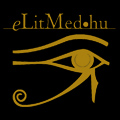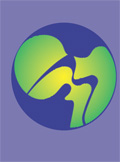The eLitMed.hu medical portal uses computer cookies for convenient operation. Detailed information can be found in the Cookie-policy.
LAM KID - 2014;4(01)
Content
[Does the vitamin K2 play a role in the prevention or treatment of osteoporosis? - a systematic review]
[The physiological role of vitamin K in blood clotting and bone metabolism is well known. A number of articles have been published recently about the effects of vitamin K2 on bone. Non-professional media promotes vitamin K2 as a potent tool for the prevention and treatment of osteoporosis. Nevertheless vitamin K2 is not included in either Hungarian, or European, or American guidelines as an anti-osteoporotic medication. Our aim was to review the literature and provide a systematic review on the role of vitamin K2 in the prevention and treatment of osteoporosis. We have searched articles on http://pubmed.org available on 14. February 2014. Our search terms were: („vitamin K2” OR „menaquinon” OR „MK-7” OR „menantrenon”) AND „osteoporosis”. We have only reviewed original articles that discussed the relationship of vitamin K2 and osteoporosis, and had at least the abstract available in English. Of the 155 articles found, 135 had a relevant topic, 126 had at least the abstract in English. Of these, 73 were original articles, including 44 human studies (8 double-blind, controlled, 26 open-label, controlled, 5 observational and 5 cross-sectional studies) and 29 animal or in vitro models. In the non-Asian population there is no evidence for fracture-preventing or BMD-increasing effect of vitamin K2 treatment. The currently recommended anti-osteoporotic medications are significantly more efficient compared with the BMD increase observed in some Asian studies. ]
[„HOPE for people with fracture”: Results of the HOPE (Hungarian Osteoporosis Project for Elderly) study]
[We conducted a multicentre, prospective, single cross-sectional, 12-month, open-label study for the assessment of treatment satisfaction using TSQM (Treatment Satisfaction Questionnaire for Medication) for zoledronic acid therapy used in patients with osteoporosis, who suffered minor traumatic fractures. PATIENTS AND METHODS - In total 1736 patients from 94 centers completed the study and filled in the TSQM questionnaire at both visit 1 and visit 2. TSQM is suitable for measuring the patient’s satisfaction with a treatment, by evaluating side-effects, efficacy and convenience of the treatment and the patient’s overall satisfaction rated on a scale of 0 to 100. RESULTS - Patients included in the study previously received a mean of 1.58 other therapies for osteoporosis and their case history included a mean of 1.24 fractures. This real-life study demonstrated that even one year of zoledronate treatment significantly (p<0.0001) improved the satisfaction of patients regarding efficacy (a mean change from a score of 56.15 to 70.89) as well as the occurrence of side-effects on a TSQM score. Regarding the convenience of treatment, the mean score increased from 62.96 to 79.34 (p<0.0001), whereas the overall treatment satisfaction changed from 59.3 to 75.48 by visit 2 (p<0.0001). CONCLUSIONS - Our study demonstrated beneficial TSQM results associated with zoledronic acid treatment, which is a basic requirement for appropriate adherence as well. ]
[The EFEZUS study: Estimation oF the Effectiveness of Zoledronic acid in Use in Steroid-induced osteoporosis in real life]
[The Hungarian EFEZUS study (Estimation oF the Effectiveness of Zoledronic acid in Use in Steroid-induced osteoporosis in real life) was a multicentre, prospective, non-interventional, open-label, one-year-long study, in which we assessed the effect of zoledronic acid on bone mineral density and on the markers of bone turnover in osteoporosis developing after treatment with glucocorticoids. The mean baseline lumbar BMD was 0.762 g/cm2 and by the end of 12 month it increased to 0.818 g/cm2 (p<0.0001). The mean BMD measured at the femoral neck during visit 1 was 0.675 g/cm2, and it increased to 0.711 g/cm2 by visit 2 (end of study) (p<0.0005). The levels of bone turnover markers (cTX, nTX) significantly decreased between visits 1 and 2 (p<0.05). The mean cTX level at visit 1 was 421.2 ng/l (SD: 309 ng/l), which decreased to 253.3 ng/l (SD: 188.1 ng/l) by visit 2. The mean change in the levels of nTX was 0.65 µg/l (SD: 0.36 µg/l) and 0.39 µg/l (SD: 0.28 µg/l), respectively. There was no major change in serum and urine calcium levels. Five adverse events were reported by 4 patients during the study. ]
1.
Clinical Neuroscience
[Headache registry in Szeged: Experiences regarding to migraine patients]2.
Clinical Neuroscience
[The new target population of stroke awareness campaign: Kindergarten students ]3.
Clinical Neuroscience
Is there any difference in mortality rates of atrial fibrillation detected before or after ischemic stroke?4.
Clinical Neuroscience
Factors influencing the level of stigma in Parkinson’s disease in western Turkey5.
Clinical Neuroscience
[The effects of demographic and clinical factors on the severity of poststroke aphasia]1.
2.
Clinical Oncology
[Pancreatic cancer: ESMO Clinical Practice Guideline for diagnosis, treatment and follow-up]3.
Clinical Oncology
[Pharmacovigilance landscape – Lessons from the past and opportunities for future]4.
5.












